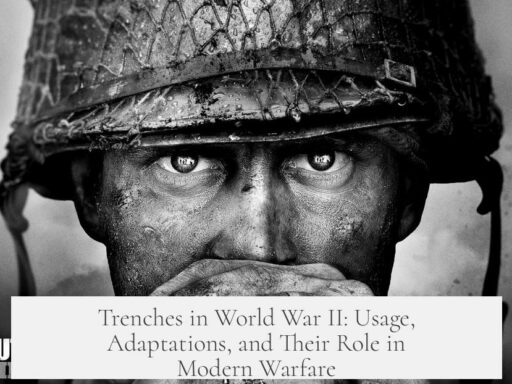The Swiss pikemen were indeed highly effective during their prime, but their legendary status requires context. Their battlefield successes, especially in the 14th and 15th centuries, came from disciplined training, innovative tactics, and strong unit cohesion. Swiss pikemen earned a fearsome reputation by standing firm against larger forces and by repelling cavalry charges that devastated other infantry.
Their early reputation grew from battles like Laupen and Morgarten, where they defended Swiss territories against the powerful Habsburgs. These victories showed their ability to fight cohesively and aggressively, establishing their identity as formidable militia soldiers. Swiss pikemen’s readiness to fight to the death, combined with demanding drill routines, made them elite infantry mercenaries in Europe thereafter.
The Battle of St. Jakob an der Birs in 1444 best illustrates Swiss pike effectiveness. Around 1,200–1,600 Swiss soldiers faced 30,000 French and allied troops. Despite being surrounded and outnumbered about 15 to 1, Swiss pikemen formed compact square formations and repeatedly charged the enemy. They held their ground for ten hours with minimal survivors, but inflicted massive casualties—about 3,000 French dead—forcing the French king Louis XI to halt his invasion and seek an alliance with Switzerland.
Swiss pike success derived from several factors:
- Training and discipline: Every able-bodied male drilled regularly in each Canton, with veterans mentoring recruits. This preserved institutional knowledge and fostered unit experience.
- Morale and cohesion: Serving alongside familiar neighbors created loyalty and a strong spirit, preventing soldiers from breaking ranks.
- Tactical innovation: Swiss infantry operated in modular 10×10 blocks arranged in flexible checkerboard patterns. They charged at a run, adapted quickly to flanking attempts, and maintained tight “hedgehog” pike formations that countered cavalry charges effectively.
These formations featured pikes longer than cavalry lances, making it difficult for horsemen to break Swiss lines. The Swiss consistently resisted cavalry until gunpowder weapons and new tactics emerged. Their resilience and offensive use of pikes were exceptional in a European infantry context.
Comparison with contemporaries like the German Landsknecht shows the Swiss initially outclassed them. Landsknechts imitated Swiss tactics but started less disciplined and lacked equipment quality. Over time, innovations like heavier armor, firearms, and specialized troops allowed Landsknechts to close the gap, contributing to Swiss declining dominance after the Italian Wars.
Limitations existed. With the rise of gunpowder artillery and arquebuses in the early 16th century, tight pike blocks became vulnerable. The Swiss suffered heavy losses against fortified Spanish troops with cannon support, marking their decline in battlefield preeminence. Deploying Swiss pikemen unwisely led to defeats, as at the Battle of Arbedo, showing they were effective only when properly commanded and supported.
Beyond battlefield results, Swiss pikemen shaped European military thought. They were among the first infantry units in Europe to widely repel cavalry and take offensive roles with pikes. Their reputation intimidated enemies and inspired mercenary models across the continent.
Swiss pikemen’s legacy also includes unique training habits, such as practicing pike thrusts on blocks of cheese, and their renowned role in the Sack of Rome where they sacrificed themselves protecting the Pope. Nevertheless, skepticism remains about their ability to face more mobile or heavily armed opponents like Mongols or evolving firearm battalions.
| Key Factors | Description |
|---|---|
| Discipline | Regular drills and veteran mentorship ensured readiness. |
| Unit Cohesion | Serving alongside canton comrades increased morale. |
| Tactics | Flexible 10×10 block pike formations that resisted cavalry. |
| Limitations | Vulnerable to gunpowder, artillery, and poor deployment. |
| Legacy | Inspired European infantry tactics and mercenary culture. |
- The Swiss pikemen earned fame through discipline, cohesion, and flexible formations.
- They effectively countered cavalry charges and held ground against larger forces.
- Gunpowder weapons and changing tactics ended their battlefield dominance.
- They required wise deployment, showing weakness when misused.
- Their legacy influenced European infantry and mercenary practices.
Were the Swiss Pikemen Really as Effective as People Say They Were?

Yes, the Swiss pikemen were extraordinarily effective for their time, earning a reputation as some of the most disciplined and formidable infantry in medieval Europe. Their success stemmed from rigorous training, innovative tactics, strong morale, and an ability to stand firm even against overwhelming odds, particularly against cavalry and larger forces. Yet, their legendary status came with caveats shaped by evolving warfare. Let’s unravel why these pikemen earned their renown, how they fought, and when their dominance began to fade.
How the Swiss Became Battlefield Legends
The journey to legend status starts with their homeland defenses against major powers like the Habsburgs. At the Battle of Laupen and Battle of Morgarten, Swiss pikemen held their ground bravely, protecting what mattered most — their territory and independence.
These battles weren’t just tactical victories; they were the bedrock of Swiss military pride. Swiss soldiers are known not only for their pikes but also for an unshakable spirit. Their reputation as mercenaries grew because of discipline and an ironclad willingness to fight until the end. This relentless tenacity was a badge of honor, a promise that they wouldn’t quit.
The Battle of St. Jakob an der Birs: Pike Power on Full Display
On August 24, 1444, the Swiss faced one of their toughest tests. A mere 1,200–1,600 pikemen stood against a massive French army of 30,000 men, sent by King Louis XI. Facing odds of roughly 15 to 1, the Swiss pikemen formed a tight square and boldly charged. The result? A 10-hour battle where Swiss forces broke the French center and held their defensive “hedgehog” pike formation despite being surrounded.
The 1,500 Swiss took a look at Louis’s 30,000-man army, formed up into one square of pike, and charged… The battle lasted ten hours… Only ten Swiss soldiers walked away from the battle. But the French had lost 3,000 men… Louis XI immediately called off his attack, returned to France, made an Alliance with Switzerland, and started trying to hire their pikemen as mercenaries…
This battle illustrated not just bravery but tactical brilliance. The Swiss sacrificed nearly all their own to force a retreat and earn respect. Louis XI, impressed and wary, flipped from enemy to ally, hiring Swiss pikemen as mercenaries. Such an outcome underlines their headline-making effectiveness.
What Made the Swiss Pikemen So Formidable?

Training and Discipline: The Backbone of Success
Swiss cantons practiced a rigorous system where every able-bodied man drilled together. Veterans passed down knowledge to new recruits, ensuring experience stayed fresh. This wasn’t your casual weekend hobby; it was regular, intense, and deeply woven into their culture.
The leaders of the Cantons were careful with contracts… experienced men came home to share battle wisdom with fresh recruits.
This continuous reinforcement created units with unparalleled cohesion and battlefield readiness. Unlike many mercenaries, Swiss pikemen maintained integrity by not fighting against their fellow Swiss—even when contracted to different employers. A smart move that kept morale high and avoided internal conflict.
Morale and Cohesion: Brotherhood in Arms
Fighting alongside neighbors and family members strengthened loyalty. Breaking rank meant dishonoring not just oneself but the entire canton. This cultural bond made their formations rock-solid. No one wanted to be the one who ran, and that mattered on a chaotic battlefield.
Serving alongside others from their cantons, they knew each other well. Nobody wanted to break and leave buddies behind—they’d never live it down.
Innovative Tactics and Pike Formations

While typical infantry of the age formed shallow lines, Swiss pikemen fought in dense, 10×10 blocks arranged in checkerboard patterns. This organization allowed rapid movement, turning, and reorientation mid-battle—skills unusual for foot soldiers of their time.
The Swiss operated in 10×10 blocks… could charge at a run, redeploy to flanks, or turn faces in place. This made them nimble, flexible in offense and defense.
Equally crucial: their long pikes, often longer than a cavalry lance, prevented horsemen from charging through. Cavalry charges, a dominant tactic across Europe, crumbled against these “hedgehog” pikemen.
Cavalry can’t really charge a tight block of infantry when the infantry’s pikes are longer than cavalry lances.
Swiss Pikemen vs. Other Mercenaries
These guys weren’t the only pikemen on the Renaissance battlefield. German Landsknecht mercenaries tried to replicate Swiss success but initially fell short. They lacked Swiss discipline, were cheaper, less reliable, and couldn’t match Swiss aggression.
The Landsknecht started because Swiss were expensive… not as well trained or aggressive. Over time, Landsknecht adopted better equipment and tactics but only caught up well after the Italian Wars when Swiss dominance faded.
So while the Swiss were top-tier pikemen early on, the Landsknecht and other mercenaries eventually eroded that supremacy by innovating, adopting firearms, and even evolving leadership structures.
The Limits and Decline of Swiss Pikemen
No legendary force is without flaws. The rise of gunpowder weaponry—cannons and arquebuses—hit Swiss tight formations hard. Remaining packed and deep became a liability as artillery tore through dense blocks. One notable tragedy: a Swiss assault on fortified Spanish troops armed with cannons ended in devastating losses.
The Swiss had a good run till gunpowder tactics rendered their pike blocks obsolete by the early 1500s. One charge on fortified Spaniards alone cost them a thousand lives before close combat even began.
Deployment mattered greatly; poorly used, even Swiss pikemen couldn’t hold the day. For example, at the Battle of Arbedo, their pikes failed to guarantee victory. Plus, as warfare mechanized, multipurpose infantry like the Spanish tercio gained favor over specialized pike blocks.
The Swiss pikemen were very effective… just as other famous branches, you have to deploy them wisely. Most medieval infantry was very shallow, the Swiss were unique with depth, but battlefield conditions could still overturn them.
The Enduring Legacy and Cultural Footprint

Despite decline, the Swiss pikemen left a long-lasting mark. They were Europe’s first infantry that not only resisted cavalry charges in open fields but also went on the offensive. This was revolutionary, altering military mindsets forever. Their reputation bolstered morale and rattled foes before battles even began.
For many Europeans, the Swiss were the first infantry that defied cavalry charges in the open and attacked proactively.
Not to mention their quirky training methods—yes, they reportedly practiced stabbing blocks of cheese to perfect their skills. Whoever thought dairy and warfare paired so well?
They also earned respect for their role in tragic heroism, like dying defending the Pope during the Sack of Rome. Of course, some humor and skepticism remain about how they’d fare against forces like the Mongols, known for lightning-fast cavalry and devastating tactics.
They trained by stabbing blocks of cheese with pikes. No one mentioned the sack of Rome yet? That time they all died but saved the pope. Hell no, they would’ve been eaten alive had the Mongols reached Switzerland.
Final Thoughts: Rising, Shining, and Sometimes Falling
Swiss pikemen earned their top-tier reputation through unmatched discipline, morale, and tactical innovation. Facing horsemen and vast armies with courage and ingenuity, they carved a unique place in military history. However, their supremacy wasn’t eternal. Advances in firearms and changing tactics gradually blunted their edge.
Still, when you picture medieval warfare, the image of Swiss pikemen standing shoulder to shoulder, steadfast and unyielding, remains legendary. Their story teaches us that effectiveness in battle is not just brute force but a harmony of training, spirit, and clever tactics.
So, were the Swiss pikemen really as effective as people say? Absolutely. But like all heroes, their tale includes brilliant triumphs, hard lessons, and a legacy that lives on beyond the battlefield.
Were Swiss pikemen truly unbeatable in battle?
No, they were not unbeatable. Their pike formations were highly effective, especially against cavalry, but they could suffer heavy losses against firearms and artillery as tactics evolved in the 1500s.
What made Swiss pike formations more effective than others?
The Swiss used tight 10×10 blocks that could charge at a run and quickly redeploy. This flexibility, combined with strong training and unit cohesion, made them both offensive and defensive forces on the battlefield.
How did Swiss morale impact their effectiveness?
Serving alongside fellow cantoners created strong bonds and loyalty. Soldiers did not want to shame their comrades by breaking ranks, which helped maintain formation and discipline under extreme pressure.
Did Swiss pikemen maintain their dominance against mercenaries like the Landsknecht?
Initially, Swiss pikemen were superior, but over time Landsknecht mercenaries improved their equipment and tactics. Eventually, the Swiss lost battlefield dominance due to slower adaptation.
How did the Battle of St. Jakob an der Birs demonstrate Swiss effectiveness?
Facing a force 15 times larger, about 1,500 Swiss pikemen held off 30,000 enemies for 10 hours. Though few survived, they inflicted heavy casualties and forced the enemy to seek alliance with them afterward.




